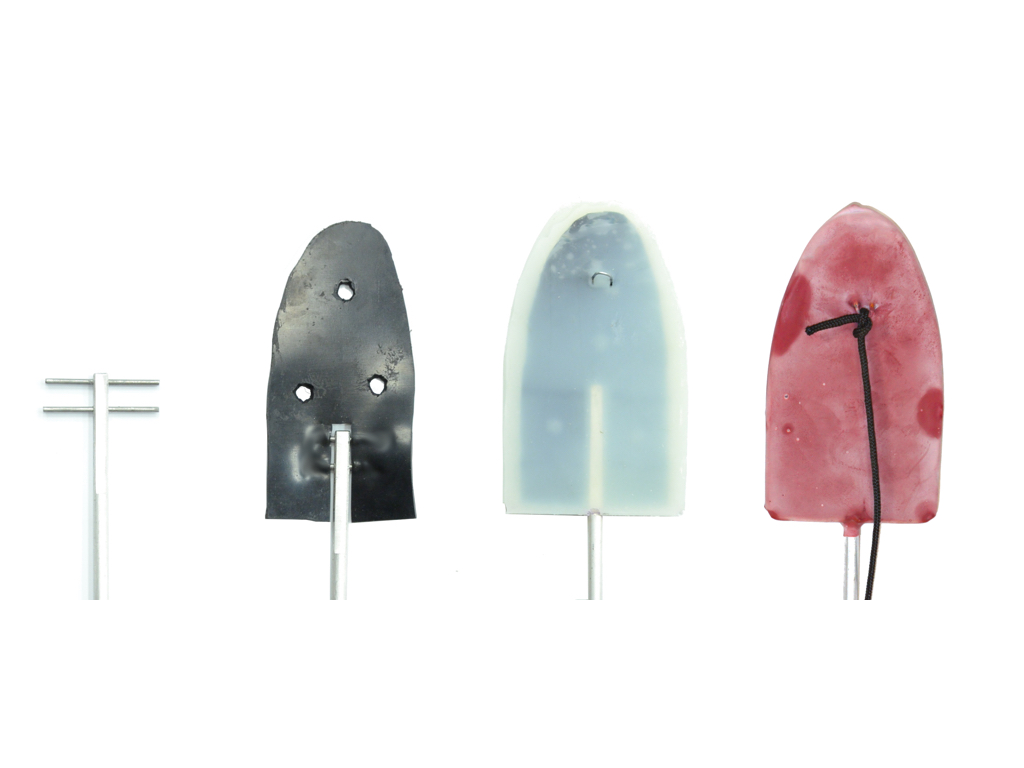

This is the solution I came up with. It is an aluminum rod for the forearm, and these spring-steel pieces give a certain amount of rigidity to the palm. Then this black rubber has the right amount of flexibility, but again, on its own it is a little too lightweight to produce some of the timbres. So, I encased that in silicone rubber which has about the right weight, but by itself it is a little too floppy which is why the black rubber is in there, and it also has a little too soft a surface texture to make some of the more crisp sounds. So, I coated that with Latex, which has a little harder of a surface texture. The Latex is a little sticky so I coated it with chalk-dust. The result sounds pretty good; to me it doesn't sound quite as good as the other one, but I think it is acceptable, and this is the hand that is on there now and it is also the hand I used in the studies I am about to tell you about. I also embedded this anchor in the silicone and put this string which gives the hand an additional half degree of freedom. So, when the arm outstretches the fingers become hyperextended, and if you watch human players, that seems to be what they do.